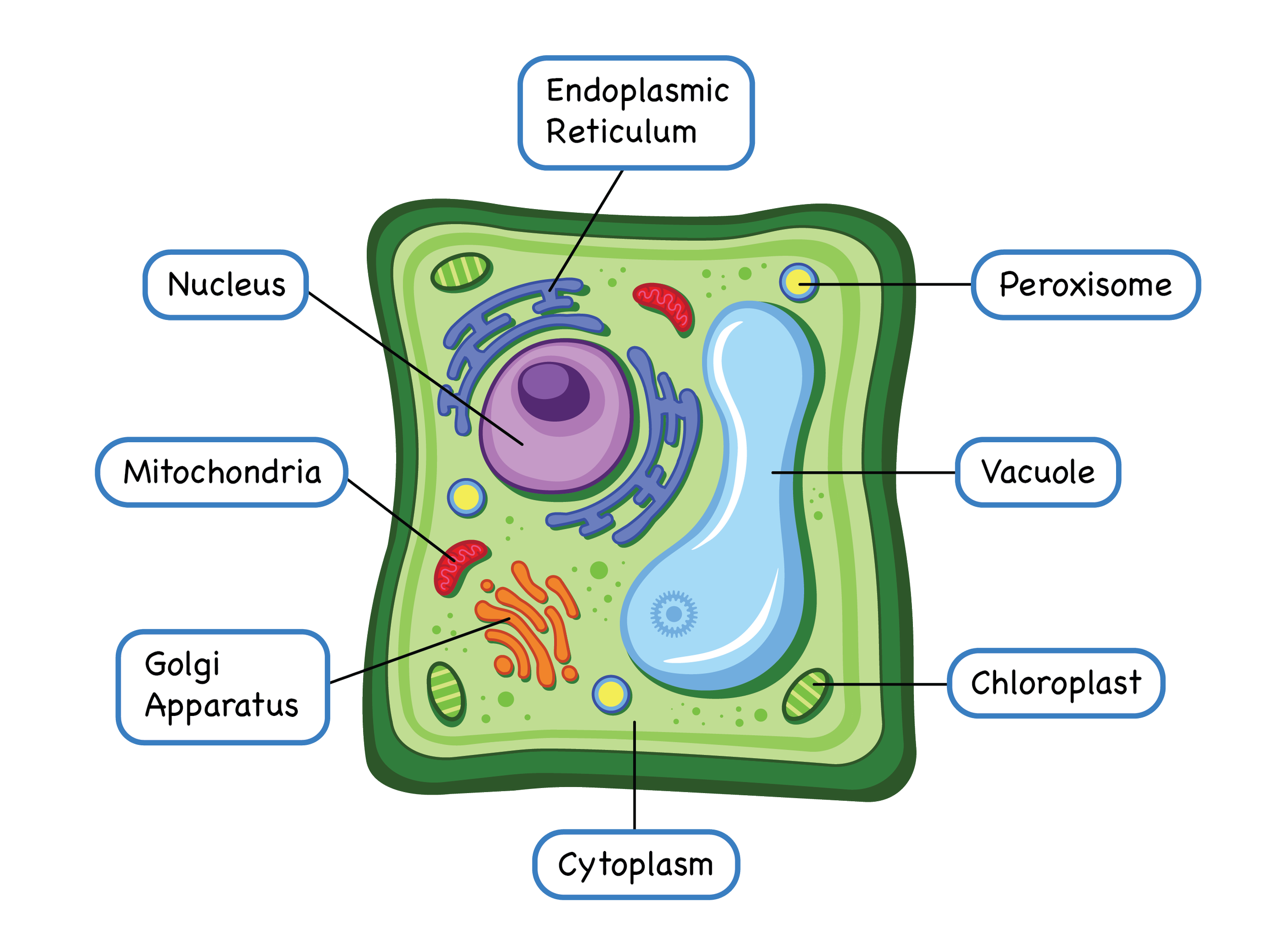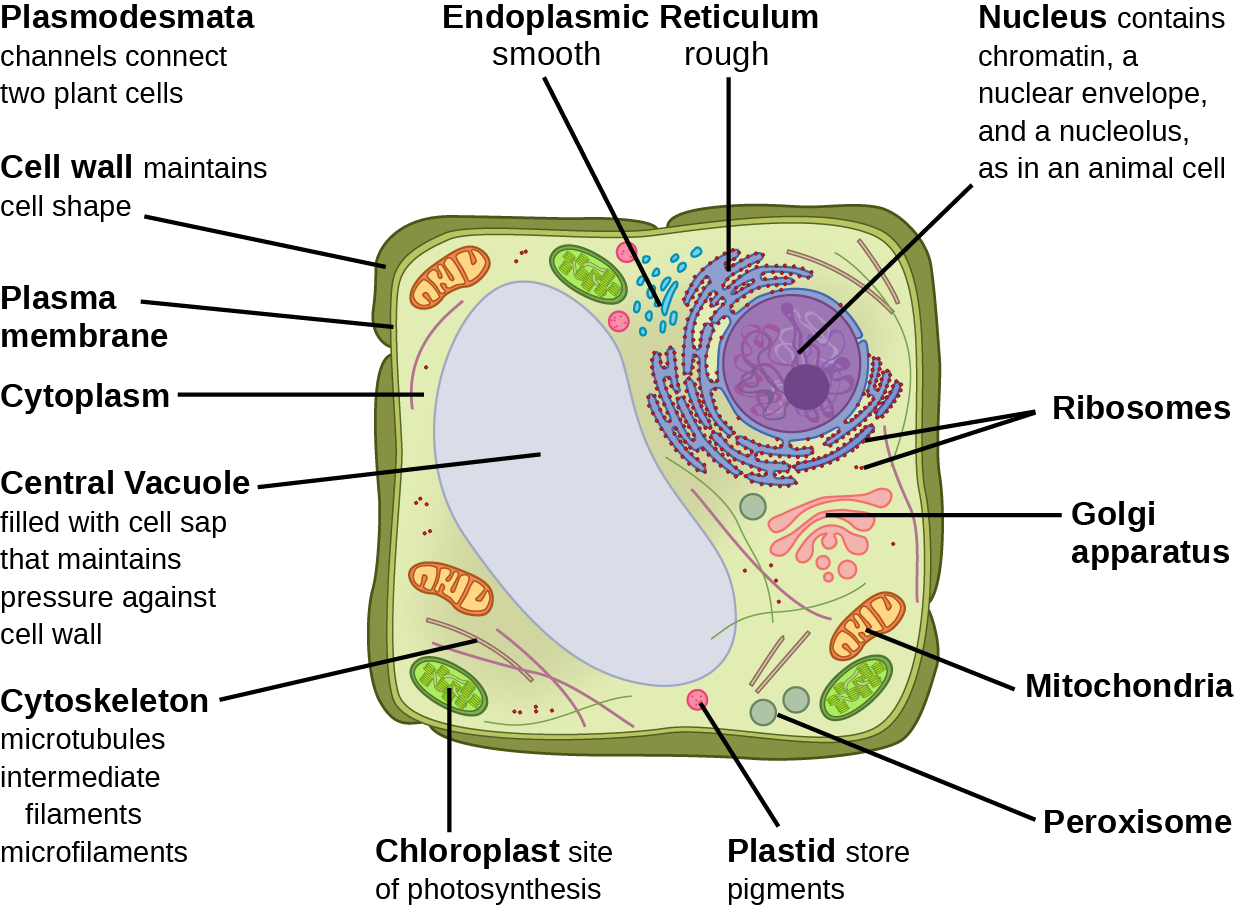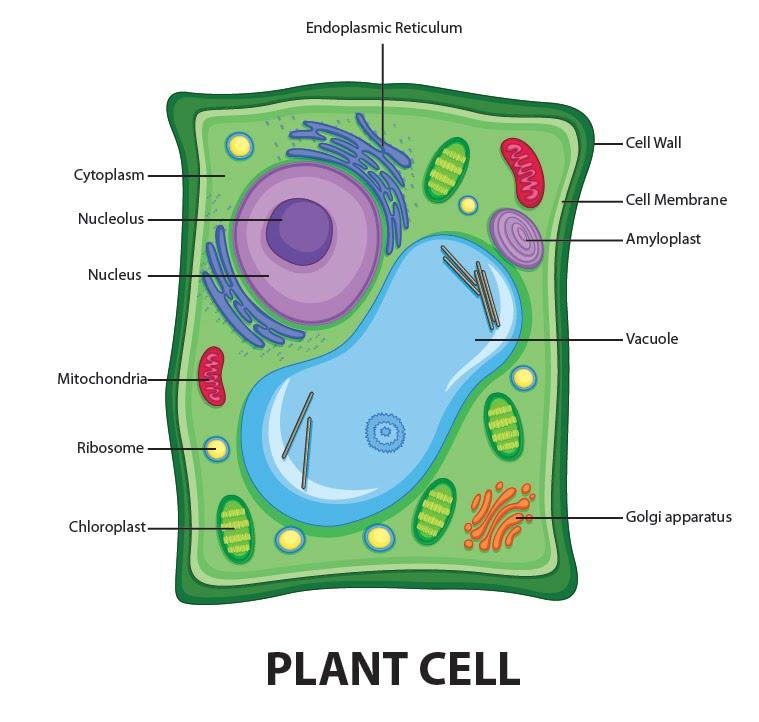
What is a cell? Definition, Functions & types FAQ Plant cell diagram, Cell diagram, Plant cell
Eukaryotic cells are cells that contain a nucleus and other membrane-bound organelles. They are the basic unit of life in all complex organisms, including animals and plants. Understanding the structure and function of eukaryotic cells is crucial to our understanding of biology and physiology. →What is the difference between Plant and Animal.

The Diagrams Of Animal Cell 101 Diagrams Gambaran
Structure of Plant Cell (Explained With Diagram) (iii) Vacuole. The protoplasm is the living part of the cell. It is externally bounded by cell membrane or plasma membrane. The cytoplasm contains several cell organelles namely mitochondria, plastids, ribosomes, endoplasmic reticulum, lysosomes etc. (Fig. 2.1).

Ultrastructure of a eukaryotic cell a plant cell (palisade mesophyll). Animal cell, Plant and
A plant cell contains a large, singular vacuole that is used for storage and maintaining the shape of the cell. In contrast, animal cells have many, smaller vacuoles. Plant cells have a cell wall, as well as a cell membrane. In plants, the cell wall surrounds the cell membrane. This gives the plant cell its unique rectangular shape.

Plant Cell Diagram Vector Infographic Illustration. Stock Vector Illustration of design
Plant Cell Diagram 1) Cell Wall. It is the outermost, protective layer of a plant cell having a thickness of 20-80 nm. Cell walls are made up of carbohydrates such as cellulose, hemicellulose, and pectin and a complex organic polymer called lignin. Functions. Providing mechanical strength, support, and rigidity to the cell; Providing shape to.

Related image Cell diagram, Plant cell diagram, Plant cell
Figure 10.1.5 10.1. 5: A micrograph of a cell nucleus. The nucleolus (A) is a condensed region within the nucleus (B) where ribosomes are synthesized. The nucleus is surrounded by the nuclear envelope (C). Just oustide the nucleus, the rough endoplasmic reticulum (D) is composed of many layers of folded membrane.

Students can stick and organise contents inside a cell and study biology with fun. — Elena
It consists mainly of cellulose. Plasma Membrane: This is a semi-permeable membrane that controls the movement of substances in and out of the cell. Nucleus: The nucleus is the control center of the cell, containing DNA that directs all cell activities.

Plant Cell Science Diagram Clipart Set 300 Dpi School Etsy Plant cell, Plant cell diagram
A diagram to show the cell wall and middle lamella of one plant cell Plasmodesmata Narrow threads of cytoplasm (surrounded by a cell membrane) called plasmodesmata connect the cytoplasm of neighbouring plant cells This interconnected system of cytoplasm between plant cells is known as the symplast Pits These are very thin regions of the cell wall

Get Plant Cell Ultrastructure Diagram Gif Diagram Printabel
Special Structures in Plant Cells. Most organelles are common to both animal and plant cells. However, plant cells also have features that animal cells do not have: a cell wall, a large central vacuole, and plastids such as chloroplasts.. Plants have very different lifestyles from animals, and these differences are apparent when you examine the structure of the plant cell.

Plant Cell Diagram, Definition, Structure, Function & Parts
Plant cells are eukaryotic cells, found in plants and algae. Most plant cells have the same organelles as animal cells, plus a few extra. The ultrastructure of a plant cell is as follows: Cell wall - surrounds the cell outside of the cell surface membrane and is made of a polysaccharide called cellulose.

Cytoplasm Plant Cell Diagram
plant cell, the basic unit of all plants. Plant cells, like animal cells, are eukaryotic, meaning they have a membrane-bound nucleus and organelles. The following is a brief survey of some of the major characteristics of plant cells. For a more in-depth discussion of cells, see cell. Unlike animal cells, plant cells have a cell wall surrounding.

plantcelldiagram Tim's Printables
3. DNA, the heredity information of cells, which can be found in a nucleus of eukaryotic cells and the a nucleoid region of prokaryotic cell. 4. ribosomes, or protein-synthesizing structures composed of ribosomes and proteins. These structures can be found on the image of the plant cell (Figure 3.1.2.1 3.1.2. 1 ).

Plant Cell Diagram to Label Luxury Can I A Well Labelled Diagram Of Nucleus Plant cell diagram
Structure of Animal & Plant Cells. The only structures found in animal cells but not plant cells are the centrioles and microvilli. Plant cells also have additional structures: the cellulose cell wall, large permanent vacuoles and chloroplasts. The ultrastructure of an animal cell shows a densely packed cell - the ER and RER and ribosomes.

Plant Cell vs. Animal Cell (25 Major Differences)
A diagram to show the cell wall and middle lamella of one plant cell Plasmodesmata Narrow threads of cytoplasm (surrounded by a cell membrane) called plasmodesmata connect the cytoplasm of neighbouring plant cells This allows substances to be transported between plant cells and facilitates cell to cell communication Pits

Draw a welllabelled diagram of a plant cell.
Plant cells are eukaryotic cells, that are found in green plants, photosynthetic eukaryotes of the kingdom Plantae which means they have a membrane-bound nucleus. They have a variety of membrane-bound cell organelles that perform various specific functions to maintain the normal functioning of the plant cell. Table of Contents

Plant Cell Diagram on Behance
The cell wall is found in plant cells, algal cells, and certain fungal cells. The cell wall is a very strong structure that is made up of the carbohydrate polymer cellulose. In fungal cells, it is made of chitin. Some bacteria also can have cells walls. The main function of the cell wall is to support the cells.

Plant Cell Definition, Types, Structure With Diagram BOTANYYWORLD (2023)
Diagram of a plant cell Above: Diagram of the structure of a plant cell Note: The diagram above is a general plant cell - so not a particular part of any specific plant. The labels in pink are links to pages of further information about the part of the plant cell indicated.